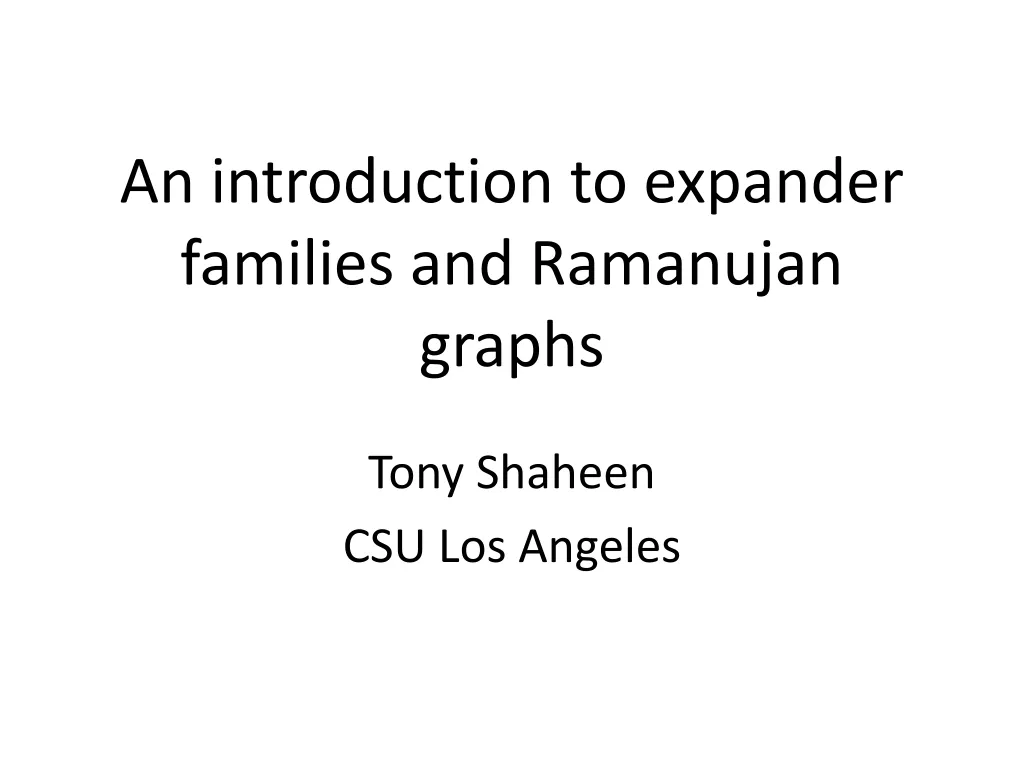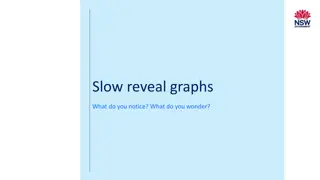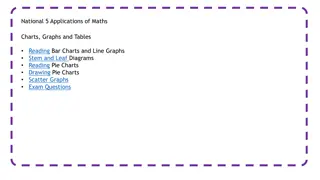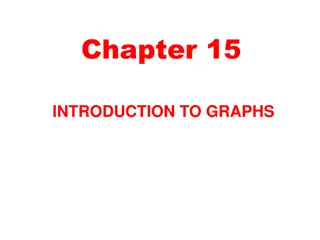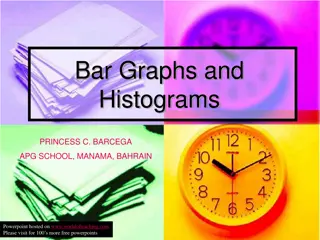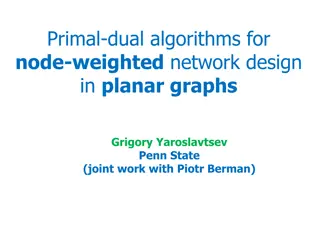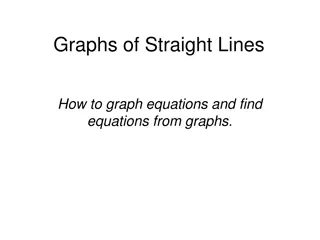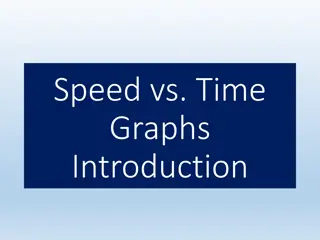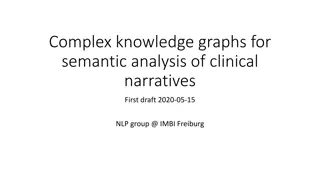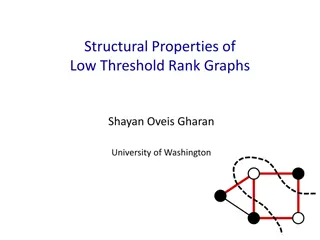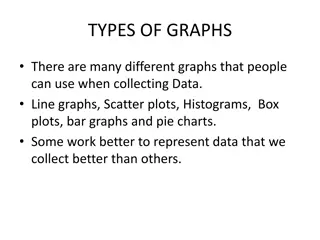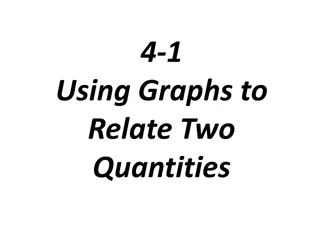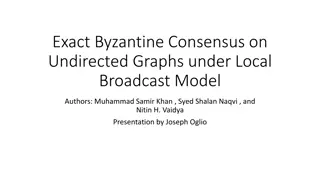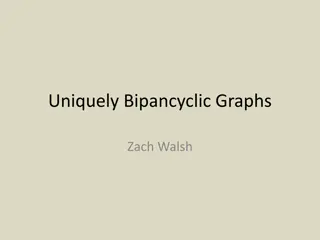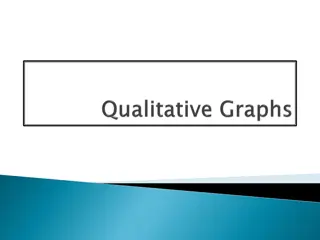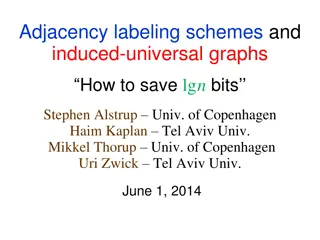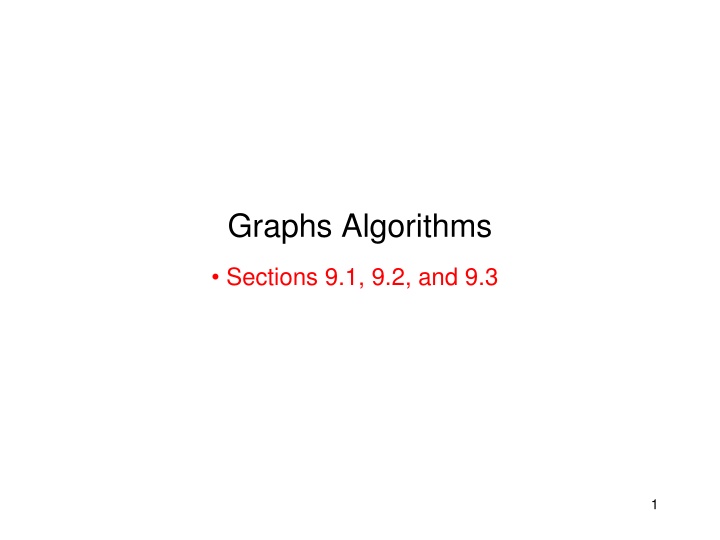
Graphs and Algorithms: A Comprehensive Overview
Explore the world of Graphs and Algorithms through sections 9.1, 9.2, and 9.3.1. Learn about different types of graphs, terminology, cycles, connectivity, and representations. Discover the concepts with images for better visualization.
Download Presentation

Please find below an Image/Link to download the presentation.
The content on the website is provided AS IS for your information and personal use only. It may not be sold, licensed, or shared on other websites without obtaining consent from the author. If you encounter any issues during the download, it is possible that the publisher has removed the file from their server.
You are allowed to download the files provided on this website for personal or commercial use, subject to the condition that they are used lawfully. All files are the property of their respective owners.
The content on the website is provided AS IS for your information and personal use only. It may not be sold, licensed, or shared on other websites without obtaining consent from the author.
E N D
Presentation Transcript
Graphs Algorithms Sections 9.1, 9.2, and 9.3 1
Graphs A graph G = (V, E) V: set of vertices (nodes) E: set of edges (links) Complete graph There is an edge between every pair of vertices Two kinds of graph Undirected Directed (digraph) Undirected graph: E consists of sets of two elements each: Edge {u, v} is the same as {v, u} v2 v3 v1 v4 v5 v6 v7 v8 2
Directed Graphs A directed graph, or digraph: E is set of ordered pairs Even if edge (u, v) is present, the edge (v, u) may be absent v2 v3 v1 Directed graphs are drawn with nodes for vertices and arrows for edges v4 v5 v6 v7 v8 3
Terminology Adjacency Vertex w is adjacent to v if and only if (v, w) is in E Weight A cost parameter associated with each edge Path A sequence of vertices w1,w2, ,wn, where there is an edge for each pair of consecutive vertices Length of a path Number of edges along path Length of a path of n vertices is n-1 Cost of a path Sum of the weights of the edges along the path v2 v3 v1 3 -2 5 2 v4 v5 v6 4 -1 v7 1 v8 4
Cycles v2 v3 v2 v3 v1 v1 v4 v4 v5 v6 v5 v6 v7 v7 v8 v8 A path is simple if all its vertices are distinct (except that the first and last may be equal) A cycle is a path w1,w2, ,wn=w1, A cycle is simple if the path is simple. Above, v2, v8, v6, v3, v5, v2 is a simple cycle in the undirected graph, but not even a path in the digraph 5
Further terminology v2 v3 v1 An undirected graph G is connected if, for each pair of vertices u, v, there is a path that starts at u and ends at v A digraph H that satisfies the above condition is strongly connected Otherwise, if H is not strongly connected, but the undirected graph G with the same set of vertices and edges is connected, H is said to be weakly connected v4 v5 v6 v7 v8 v2 v3 v1 v4 v5 v6 v7 v8 6
Representation of Graphs To store graph information, we need to store the connectivity (link) information. Two popular representations Adjacency matrix Use a 2-dimension array to store the connectivity: A[u][v] is true if there is an edge from u to v, false otherwise A[u][v] may store the weight for a weighed graph Adjacency list Each node maintains a list of neighbors (adjacent nodes) 7
Representation of Graphs Adjacency matrix A[u][v] is true if there is an edge from u to v False otherwise For a weighted graph, assign weight instead of true/false O(1) time to decide whether (u, v) is an edge A[N][N] O(|V|2) space Wasteful if the graph is sparse (not many edges) F T T T F F F F F F T T F F F F F F F T F F F T F F T T F F F T F F T F F F F F F F F F F F F T F Adjacency matrix 8
Representation of Graphs Adjacency list Each node maintains a list of neighbors (adjacent nodes) Need to go through the list to decide if (u, v) is an edge Takes O(|V|+|E|) space Adjacency list 9
Representation of Graphs Adjacency matrix .vs. adjacency list O(|V|2) .vs. O( |V| + |E| ) Are typical practical graphs dense or sparse? A popular social media network can easily have tens of millions of users. Can their adjacency matrix be stored in one computer? 10
Topological sorting Let G be a directed acyclic graph (DAG) Topological sorting an ordering the vertices of G such that if there is an edge from vi to vj, then vjappears after vi One topological sorting MAC3311, COP3210, MAD2104, CAP3700, COP3400, COP3337, COP4555, MAD3305, MAD3512, COP3530, CDA4101, COP4610, CDA4400, COP4225, CIS4610, COP5621, COP4540 11
Topological sorting In a DAG, there must be a vertex with no incoming edges Have each vertex maintain its indegree Indegree of v = number of edges (u, v) Repeat Find a vertex of current indegree 0, assign it a rank, reduce the indegrees of the vertices in its adjacency list Running time = O(|V|2) 12
Topological sort A better algorithm separating nodes with indegree 0 Use a queue to maintain nodes with indegree 0 O(|E|+|V|) 13
Single-Source Shortest-Path Problem Given a graph, G = (V, E), and a distinguished vertex, s, find the shortest path from s to every other vertex in G. Unweighted shortest paths Breadth-first search Weighted shortest paths Dijkstra s algorithm Assuming no negative edges in graph 14
Unweighted shortest paths (Example) Find shortest paths from v3 to all other nodes 15
Example (Contd) (1) (2) (3) (4) 16
Implementation of unweighted shortest paths Running time O(|V|2) 17
A better way Separating unknown nodes with minimum distance Using queue to track the nodes to visit Complexity O(|E|+|V|) 18
Weighted graphs: Dijkstras algorithm The weighted-edge version of the previous algorithm is called Dijkstra s algorithm for shortest paths The process: (1) pick one node with the shortest distance, (2) update the distance for all nodes that are adjacent to the picket node, (3) repeat until all nodes are picked. 19
Implementation (Contd) Complexity depends on how smallest distance vertex identified. Sequential search O(|V|2) Priority queue (heap) O(|E|log|V|+|V|log|V|) Fibonacci heap O(|E| + |V|) 23

